
What Climate is This? Part Two – A Garden Futurist Special

Contributor
Winter 2022
Listen to the Part 2 Podcast here.
If you live in the Pacific region, you know that seasons in your garden look different from the rest of North America. There are many potentially important factors and multiple systems for mapping zones in our region. Ecoregions, microclimates, hardiness, rainfall, soil types, elevation, chill hours, ecology. It goes on and on. You have likely observed that the Pacific Ocean annually influences weather patterns from the coast all the way to the mountains.
In an already complex region, climate scientists tell us that extreme changes are underway now. We held a conversation recently with a panel of experts working within the fields of climate science, ecoregion, and hardiness mapping. As we listen to the panelists, we are going to attempt to frame this conversation through a horticultural lens.
Sarah Beck: You’re listening to Garden Futurist, I’m Sarah Beck.
Welcome to Part 2 of a special two-part episode, “What Climate is This?” It is part of our series Multidisciplinary Approaches to Resilient Landscapes.
If you live in the Pacific region, you know that seasons in your garden look different from the rest of North America. We held a conversation recently with a panel of experts working within the fields of climate science, ecoregion, and hardiness mapping. As we listen to the panelists’ discussion, we are going to attempt to frame the conversation through a horticultural lens.
Joining me again to help us with horticultural translation is Bart O’Brien, botanic garden manager at East Bay Regional Park District in Berkeley, California.
I’d love to hear about your own experience as a plants person, and going through this process of getting to know the Pacific region through the topography, the ecology, the climate. I mean, this is all such complicated stuff and yet when you go deep on plants, you end up sort of touching it at a lot of different points, right?
Bart O’Brien: Yeah. I was born and raised in Hollister, California, so just inland from Santa Cruz a bit and south of where I am now, here in the Berkeley Hills. Yet it’s Sunset Zone 14, which again, even way back, Sunset said there are two kinds of 14: there’s the ones that are near the coast and the ones that are more inland and in the Central Valley.
And then when I went to college, I went to UC Davis, which was another Zone 14. The plant life there was completely different. I mean, I’ve lived on the peninsula. I’ve lived in the South Bay. I’ve lived for 23 years in the LA area, up in the mountains at around 4,000 feet in the San Gabriels, and in Upland.
Curiously, we found that when I was director of horticulture and curator of the collections at Rancho, now California Botanic Garden, we would do plant exchanges of native plants. The folks at UC Davis Arboretum would always say, “Anything that you send us, we can grow really well, in general, but stuff that we get from Berkeley, and Tilden, not so much,” and that it was because we’re both hot, dry interior climates.
The real difference between that part of the Central Valley and that inland part—or the Inland Empire part of Southern California—is that in the winters, the Central Valley has a lot more humidity and the fogs and all of that, which the inland parts of Southern California do not have at all. So the winters are just very different experiences. Down south, where Claremont and Upland are, are not Zone 14.
It wasn’t as cold as being down a little bit lower down the alluvial fans, those are sort of gross-level things. Of course, when you’re on a site, you need to understand the soils and how they got there and what’s been done to them.
Most of us live in homes or are gardening in former agricultural land or urban land, and that there’ve unusual inputs, some that you can define clearly, and some that you really have no idea what people did in the past.
In the climate change context, all of these things that were talked about in your earlier piece were all models based on history. Everyone is trying to create models that are going to forecast where we’re going, which is always going to be difficult and always going to have flaws, because there is no perfect model.
When I think about climate change, I think about it as more, “what are the trends supposed to be?” And they’re supposed to be warmer overall, but with extreme periods of heat and drought, and extreme periods of cold. And so that’s what I think about long term, in how people should be thinking about gardening and plants.
It’s that if you’re just thinking of what locally has been grown or is locally there, native, you’re going to miss the boat and an awful lot of plants are going to go away because they won’t be adapted to the local conditions. I mean, if you believe the models—and I do—that the San Francisco Bay Area is going to be very similar to San Diego area, then planting a lot of rhododendrons and Pieris and all these things that have historically been grown incredibly well in the Bay Area, that should not be where we’re going. We probably can’t even be going with a lot of our local, more coastal-adapted native plants.
Already here at the botanic garden, and I’ve mentioned this to a number of people, I see some plants from that area actually naturally being spread into the adjacent wildlands—or less-managed lands—than the garden, from the San Diego area.
Sarah Beck: Now let’s get back to the panel. This is the second half of the conversation between climate and horticultural mapping experts Dr. Dan McKenny, Dr. Ryan Longman, Glenn Griffith, and Kathleen Norris Brenzel. To recap from Part One, Dan is the director of Integrated Ecology and Economics at the Canadian Forest Service. Ryan is a fellow at the East-West Center and a collaborator on the Hawai`i Climate Data Portal at University of Hawai`i. Glenn is from the US Geological Survey, emeritus, in Corvallis, Oregon. And Kathleen is editor of the past four editions of the Sunset Western Garden Book. Dan will answer the first question.
I understand there is just so much collectively represented from maps as well as databases. But I think more importantly than that is obviously the ability to interpret what these data mean, and what that means to us as humans living and gardening and stewarding landscapes in all these places.
When you look at the Pacific region, do you do some lumping? Are there factors that either unify or stand out as key to our understanding a special sense of place here?
Dan McKenny: I mean, you’re talking about plant distributions or potential distributions. If you’re a gardener and you wanna push the envelope, so to speak. So, I mean, I think you obviously have some pretty significant climatic gradients. As you go inland away from the ocean, up the mountains, you’ve got fog that affects some distributions of some plants. And you’ve got things that are barriers, natural barriers that prevent things from moving.
Climate’s influenced by topography. That’s well known. Modern climate interpolation methods can capture that much more robustly. But the problem is that there’s never a weather station exactly where you need it, unless you happen to be lucky.
So we make these maps. The maps are enabling us to perhaps get to be able to split things a little bit more than maybe what was done historically, but there’s a lot of progress with respect to making maps and predictions of what can grow where in a much more higher resolution.
But it’s not all about climate. Everybody has to remember that. I’m certainly not saying that.

Sarah Beck: I think a lot of us in the Pacific region have noticed that there’s always some kind of disaster happening. Obviously, disasters happen a lot of places, but I think those of us in the Pacific region have started to take it personally. You know, there’s a lot of extreme experiences here with wildfire and heat domes and droughts.
Ryan, I’m hoping you can share a little bit of the climate scientist view here, about these extreme changes that we are seeing, that we will see. I know Hawai`i often gets described as this sort of bleeding edge for extremes. Can you give us some orientation to thinking about drought for instance?
Ryan Longman: Well, yeah, it’s a good question. One of the tricks in Hawai`i is that the interannual variability, right, these natural modes of variability are so pronounced that a lot of times people wanna say it’s climate change, but that signal is hard to flush out because of that variability. So it takes time to collect data and really understand what’s going on.
Some things like temperature increases, I mean, that’s global. And we can document those in Hawai`i and they’re in line with global. Other things, like extreme rainfall events, stuff like that, that’s always been happening. So it’s tricky to really find that signal there.
In terms of drought, though, we just published something on looking at drought and we are finding, through this hundred-year record, that droughts are not necessarily becoming more frequent, but they’re lasting a little bit longer and they’re a little bit more intense. So that’s a significant signal that we’re finding.
So as new data emerges, people will actually put their heads down and try to take a closer look. You know, these things are starting to emerge.
The last 10 years are different than the last 20 years, and the last 30 years. And we see this dynamic. The normals are shifting. And I think that’s always just going to open up more opportunities to take a closer look and do analysis and figure out what’s happening. So 20 years from now, we might have a better idea that signals actually exist.
Dan McKenny: I think you’re making a very important point with some variables that will affect, certainly, natural distributions of plants. In our part of the world, the prairies may be expanding or some mountainous areas—or more mountainous—turning more sort of mediterranean, which obviously will affect fire regimes, and fire regimes are really going to affect plant distributions, especially if plants can’t get to their fecund part of their lives, right? They can’t produce seeds naturally, so it’s an important thing.
Resources
See the Environmental Protection Agency for more information on ecoregions.
Natural Resources Canada maintains Plant Hardiness Zone Maps.
Sunset also provides detailed information on its climate zones.
Bart O’Brien is the director of the Regional Parks Botanic Garden near Berkeley, California.
Glenn Griffith from the US Geological Survey, emeritus, has contributed to several ecoregion mapping projects, from Ecological Regions of North America [pdf] in 1997 to the Environmental Protection Agency’s ecoregions page.
Dr. Dan McKenney, director of Integrated Ecology and Economics at the Canadian Forest Service, has contributed to climate modeling projects and Natural Resource Canada’s Plant Hardiness Zone Maps.
Kathleen Norris Brenzel, editor of the past four editions of the Sunset Western Garden Book, as well as the Sunset National Garden Book, and The Healthy Garden: Simple Steps for a Greener World. Sunset also provides detailed information on its climate zones.
Dr. Ryan Longman works on the Hawai`i Climate Data Portal and the Pacific Drought Knowledge Exchange. You can also find the Hawai`i Climate Data Portal on Instagram and Twitter.
- Example of a climate portfolio
- Example of a factsheet
Glenn Griffith: Yeah, the extremes are going to be more frequent occurrence and we’re going to try to adapt to them. A year ago, June, it was 117°F here in my area and my blueberries baked right on the bush, and that was a severe wake-up call.
I’ve been gardening in this spot for about 36 years, and I never used to have to water in late October in my vegetable garden, but I’m doing it this year. But we adapt somehow. We have a few perks. Tomatoes and peppers are still going strong and they never used to at this time of year.
But yeah, these extremes are very concerning.
Sarah Beck: I get nervous when people like Ryan tell me they’re freaked out when they’re looking.
Ryan Longman: Glenn just made a really good point there. Climate change doesn’t mean it’s bad for everything. There’re some areas of the world that are planning for adopting new crops and developing new businesses around the warmer climate.
I know vineyards are moving further north and I’m not an expert in this field by any means, but I know that there are going to be some winters, when it comes to warmer or drier or wetter conditions, depending on what you’re trying to grow and where you are.
Sarah Beck: Ryan, you work with a lot of cultural elements, too, in Hawai`i, and I’m just wondering how that cultural layer helps us understand and interpret climate and how we respond?
Ryan Longman: Yeah. Well, I mean, a lot of times you see folks that are trying to find these solutions, right? I’m moving to that with my research a lot. Not just, “Oh, this is happening, on the next project.” What can we do about it?
I see this emerging a lot in some consulting projects that I have, also, that folks are trying to revisit things that were done in the past to adapt to the changes in the future. So, good practices that were modeled by early Indigenous in different areas across the Pacific.
But even though the Hawaiians’ agricultural practices that were adopted then that worked, we’ve moved on to more commercial, other things, other different practices that may not be working now under changing environmental conditions. So a lot of what we’re seeing is folks going back or thinking about what was done in the past to make these adaptation decisions for the future.
And it’s really, we’re at the ground floor in terms of being able to really articulate this well. But it’s ongoing work.
Sarah Beck: So I’d just like to give a little wink to Kathleen on this, because what you were just saying makes me think a little bit about gardening and whether gardening helps us cope with climate change. Certainly, obviously Pacific Horticulture has a vested interest in that concept, but just thinking about how humans cope and can we start thinking about how the layers of this conversation have a little bit more of an optimistic, active role for people to be part of?
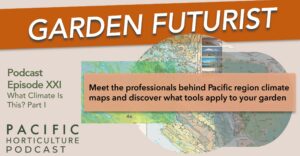
Kathleen Brenzel: Well, they do, and there’s a lot of adapting that will have to happen. And I was thinking about the mention of Napa Valley. We are very involved in some wine-growing and winemaking groups up there. It is a problem. There are certain varietals in the upper, what we call Zone 14, the Napa area, that are not getting the heat that they need, or they’re getting too much heat, let’s put it that way. They need more chill. Some of the white wine grapes need more chill. So that is slowly creeping in that direction.
I think people are wonderfully resilient, though, in terms of adapting to this thing.
In terms of your own garden, I was thinking about something my former boss at Sunset said, who was a former garden editor and he was a huge baseball fan. He used to say, climate zones can get you, basically, to the ballpark. But what you really need is home plate to get you to what you need in your own garden.
In my most recent book, we told people to look around the neighborhood and see what’s growing really beautifully without a lot of fuss, and take your hints from that. Is it the shrubs and the trees and the local vegetation that is thriving despite droughts or whatever is being thrown at us? And then what? Take your lessons from that and start there.
And that’s basically how I started. When we moved into this house and we’ve got giant redwoods across the back and I thought, “How am I supposed to do anything with this?” But then I thought, “You know, those redwoods that grow naturally up the coast from us have all kinds of sword ferns and everything underneath. That’s what I’m going to do,” and that’s what I did.
So you take your lessons, really, from observation, too.
Sarah Beck: Dan, being an economist, you’re probably also looking at these as resource potential, right?
Dan McKenny: Well, I think people need to be observant and respond to climate change. Adapt, as Kathleen has said.
I think a challenge with a changing climate—and I think, Ryan, I suspect you agree—one of the problems about it is that the patterns are shifting in ways, like precipitation regimes and temperature regimes, they’re not all moving at the same rate. Things are happening at different time steps that will affect plant performance.
An extreme, well, Glenn, you mentioned your own garden, there, affected. Blueberries burning out in June. We’re going to have to observe what grows well in our garden. I think we’re going to need citizen science, and I think people need to be circumspect about these things. They need to recognize it’s happening because it is. Make sure that we learn, and we learn quickly.
Sarah Beck: Glenn, you just now were referencing that personal garden experience, and I know that you’ve looked at—from a very analytical perspective—how changes might give us opportunities to steward landscapes differently.
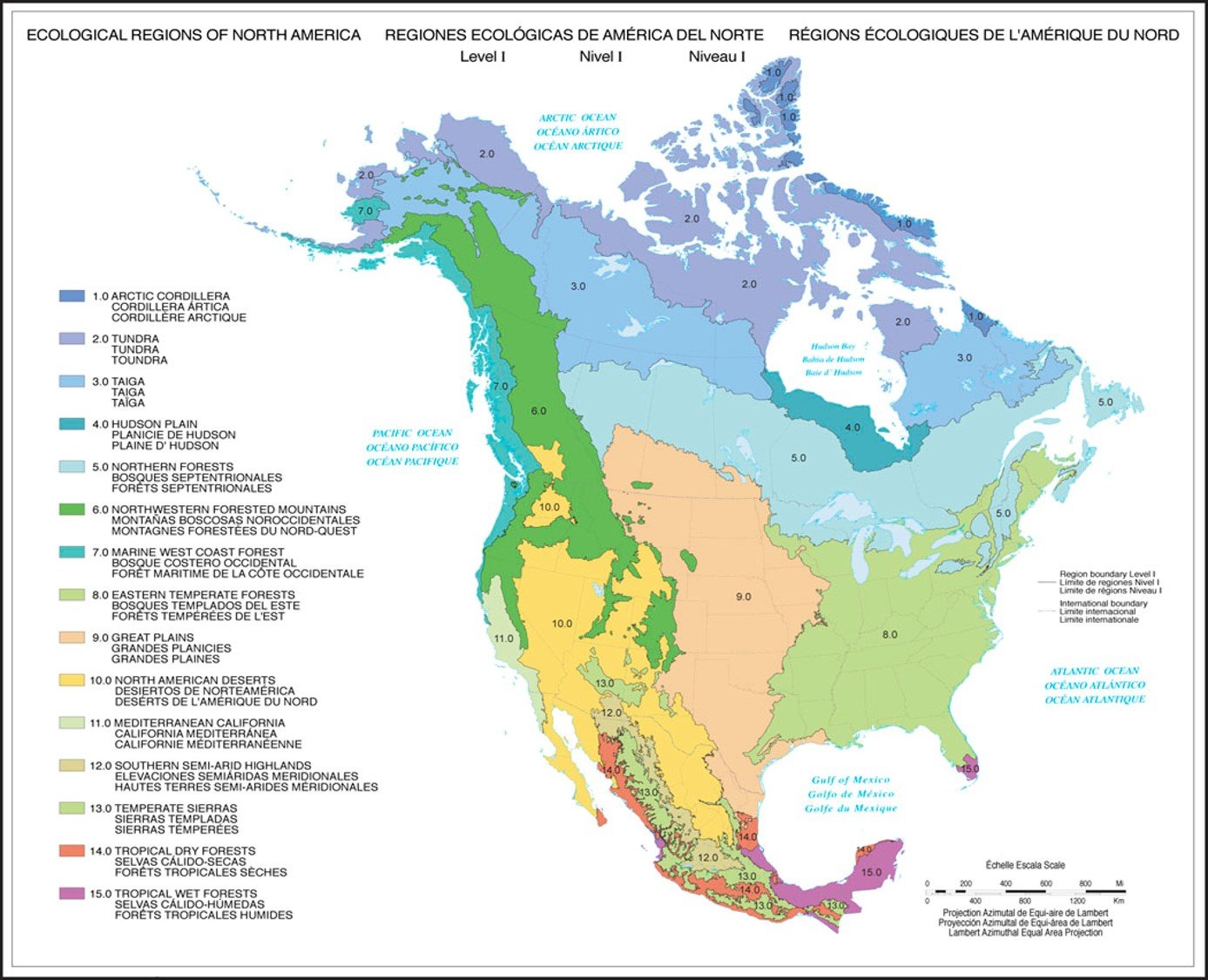
Glenn Griffith: There are limits to our adaptations, though. But here’s my take on it. And I’m biased, I know. I think ecological regions influence our regional economies, our resource bases, our land use patterns, the flows of water. So strategies to ensure meeting just basic human needs, such as providing clean drinking water, ensuring healthy soil for food production, making location- and material-appropriate affordable shelter—these all have regional strategies that are needed. Tapping into more sustainable energy sources. These flows of energy go through our ecosystems in many different ways, in different forms and rates. These all have regional variations.
So I think our science can help us recognize the possibilities of these natural potentials and limitations. And art I think helps, as well. But yeah, there’s a lot of opportunities to steward and regenerate and revive and be more resilient, but we have a lot of work to do.
Sarah Beck: Joining me again is Bart O’Brien.
To consider how this work that’s being done on mapping, tracking climate and ecological data can inform a horticulturist, I’m wondering if it also includes like what those plants are that might be successful?
I’m wondering, in terms of what the climate scientists are describing as these bursts of, I don’t know, just chaos. We’re have these big event weather events where it’s like, “Oh, then when it rains, maybe it’s a flood, or the drought becomes super extreme.” Obviously, you can’t just bring up a Baja California plant and be like, “Oh, you love it dry. Oh, it’s going to be hot and dry,” and then suddenly there’s like a monsoonal wet period.
Bart O’Brien: Well, I would say that sort of the global nature of vegetation will move toward more weedy plants.
Sarah Beck: That’s interesting.
Bart O’Brien: That’s sort of where it’s going anyway, without a lot of climate change. It’s just what’s weedy survives. But as gardeners and restorationists and people really interested in plant diversity, there are things that you can do in your home garden that aren’t really readily adaptable to restoration-type things.
When our garden reached 107°F on the day that San Francisco reached 109°F, and there had never been anything even close to that here, it burned a lot of the deciduous tree leaves, but the plants themselves were fine.
I happened to be down in LA during that extreme heat, it was over a Fourth of July weekend, probably about, what, eight years ago? Even coast live oaks (Quercus agrifolia), the sunny side of them were just completely bleached. But the plants overall, except for those that were compromised by disease or Phytophthora or just age, the regular plants seemed to survive okay.
Also, putting up temporary sunscreens during or just before you know one of these heat domes or heat wave things is going to happen. I mean, we had that one here earlier this year that was just a one-day event. Yeah, throw some burlaps or sheets over some plants for the day and wet it down a little bit.
Sarah Beck: Like what happened in Portland and Seattle recently, very similar. Maybe mulch is perhaps a piece of it. But like you’re saying, maybe there are some more extreme practices we need to be ready for those moments.
Bart O’Brien: Yes, especially for those plants that you’re in zone denial about. Almost all gardeners practice some level of zone denial.
In an era of climate change, that’s not necessarily bad, particularly if you have like a more heat-loving and drought-tolerant and cacti and succulents and so on. The key thing to know, though, about some of those groups is that, as most gardeners know, there are cool-season succulents and warm-season succulents, and that most of the succulents people want that are from non-mediterranean climate areas need some water in the summer to look their best.
So if you really like the Mexican agaves, you need to water them on occasion in the summer, to have them really look nice. Otherwise yes, they’ll shrivel, and they won’t like the real wet winters. Yet they’re very adaptable with minimal inputs.
That’s sort of what I look for and advise people that aren’t terribly interested in gardening and plants, the plants that they can do a little bit for, and they’ll really perform. Myself, yes, I grow everything at my house, and I experiment with all kinds of things just to see what happens.
Sarah Beck: I guess my question to you, Bart, is really: as the climate-appropriate gardener, how should you use that filter? What should be a potential rubric or a decision-making process for making good choices and not selecting something that really shouldn’t be somewhere?
Bart O’Brien: Yeah. Well, number one, to me ,is avoiding plants that could be weedy.
My definition of a weed, there’s the basic one: any plant out of place is a weed. However, I take that further. To be a weed, it’s got to not only be out of place, but it also has to be able to aggressively cover ground, whether it’s vegetatively or by seed, and that is oftentimes readily spread by wildlife or humans.
Sarah Beck: If we’re thinking that some of these plants that are aggressive, and many of them are probably known to us already, do you feel like they’re gaining an advantage in some of the changing climatic circumstance?
Bart O’Brien: Certainly. If you’re thinking about California landscapes in general, both natural and artificial landscapes, weeds are a major, major issue. I mean, when you just even think of all the European grasses that come up everywhere. One of two weeds that gets up into the alpine zone is a non-native grass.
So these plants are very well-adapted to getting around and crowding out natives. And that if you think that the natives are going to be pressed because the climate isn’t what they grew up with, it’s going to make it easier for more aggressive, exotic plants, and maybe even some native plants, to become more weedy.
When I went to Chile, I saw California poppies all over the place in wild landscapes and Lupinus arborius all over the coast. So it’s not that California plants are blameless worldwide as far as weediness.
Sarah Beck: Sure.
Bart O’Brien: One just is going to be seeing more of these kinds of plants out there. And I think a lot of them are probably going to be leguminous, simply because the seeds can survive almost anything, and are very, very, very long lived.
It doesn’t mean that there won’t be other plants and that you can’t have interesting and diverse gardens. I expect people will always have interesting and diverse gardens. They may just get smaller and smaller because of space and more and more people now that there’s over 8 billion of us. It just makes more pressure on the set-aside “wildlands” that we all enjoy, and that we all depend upon for housing so much of the biodiversity.
When I think about California in particular, it’s that in geologic time, the coast was always the refugia for plants. And you see a lot more geologically older plants near the coast, or areas with coastal influence, or that are just more temperate, less extreme environments.
That’s where so many of us live now. There’s not going to be the major fog refugia all along the coast where things can just move up and down.
Sarah Beck: When we’re seeing distribution of plants changing in these, I mean, maybe they’re not completely wildlands, but there are wilder spaces. How should a gardener or how can a gardener think about watching these changes, and should we be reacting or following the lead of some of these areas we’re seeing success of plant redistribution? Is there really a role for us as gardeners thinking about this and observing that?
Bart O’Brien: Yeah, I think that there is, and it gets very complicated in California simply because there are so many rare plants.
So if you think about manzanitas, our garden is ground central for manzanita diversity and collections. Here in the Bay Area, we have so many really localized endemic species, many of which are state or federally listed. And so should we be concerned about moving some of those San Louis Obispo coastal things, or San Diego coastal manzanitas up into our area, even though they might be happier here now? It’s complicated.
Botanic gardens are already doing that on a couple of specimens basis. Yes, most of them are very happy here, but it would have to mean that you have to think about, okay, well, Arctostaphylos pallida, federally listed. Arctostaphylos imbricata, federally listed on San Bruno Mountain. They need help to go up to Crescent City, or wherever their ecological niche will be.
Whereas it’s not going to be possible to do that whole-population-wise. It’s why having these seed banks that are population-level based and long term are so important. They are the backstop for climate change, short- and long-term, as long as they themselves are protected.
There’s a lot of support right now for seed collection of particularly rare and threatened plants, endangered species, and some that are less so, but California is very much in the forefront of that effort with wild species.
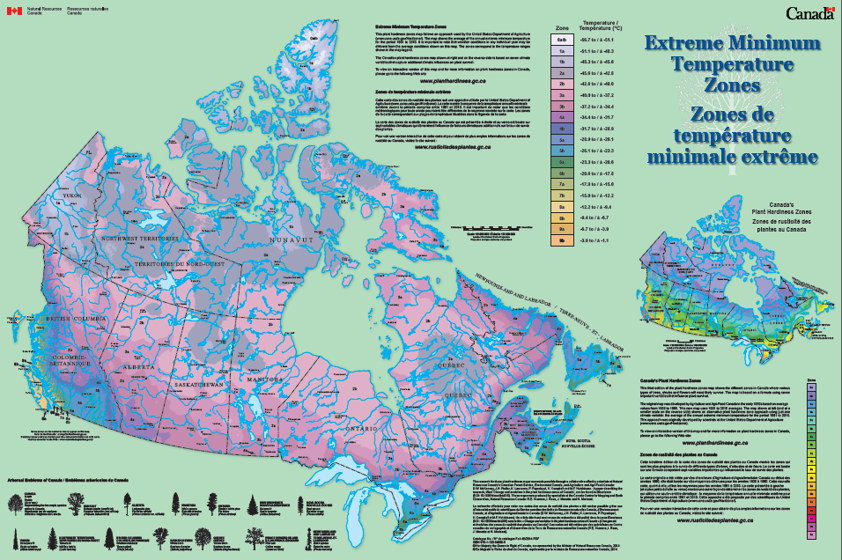
Sarah Beck: This has been a great conversation and a lot to contemplate. I am joined now by my co-producer Adrienne St. Clair for a few final thoughts. Adrienne, I would love to hear your thoughts on this idea of regional shifts of plants.
Adrienne St. Clair: Yeah. And this ties into that idea of how the North American West Coast differs so much more dramatically than the rest of the continent.
So when people talk about climate change, a lot of people talk about this idea of south moving northward. And when you look at native plants, and specifically in the North American West Coast, that’s not exactly the full story.
So if you look at the Midwest and the East Coast, the ability to predict climate shifts is more straightforward. If you pull a niche out and start to model how that niche will shift over time with climate, you see this general consistency to move northward and eastward, and in fairly long distances.
When you get to the Rockies, however, everything changes. And that’s because of that topography and it’s because of the influence of the Pacific Coast. And we’ve been hearing about these two things being such factors in climate science, especially on the West Coast. So if you take another climate niche on the West Coast, and you look at what components are there—the highest temperature, the lowest temperature, the rainfall, the sun aspect—and you look at that niche and see how it’s going to change with climate, it’s not necessarily going to move north.
In fact, when you look at many of them, you can see that there is no consistency with how they move. And it could be that that climate niche is actually moving from a south-facing slope around the north side of that mountain range. And now that niche is going to be found on the north side. And geographically, that distance is not very far.
But because of all of these factors of topography and the ocean, we can’t as easily predict how niches are going to change.
Sarah Beck: That is super interesting.
Adrienne St. Clair: So what that means for sourcing native plants makes a really complicated story.
Sarah Beck: As we think about this as horticulturists and think about plants as gardeners, knowing that these changes are really unpredictable, how can we not get frozen in thinking about all of these data points and being like, “Oh my gosh, all these changes are happening.”
Adrienne St. Clair: I think that’s an interesting strength that gardeners have that as a restoration ecologist, gives me pause. There’s this idea that, as a gardener, you can push that edge a little bit. You can push that boundary.
I think the opposite has been the case for restoration. We’ve held climate envelopes as kind of sacred, these climate niches as this sacred thing that we can’t change within, and maybe to our detriment.
So in the ‘40s, ecologists started recognizing that plants from the same species from two different locations might be different in important ways that help them survive better, right? So this is called local adaptation and it means that some plants from here, even though they’re the same species from plants over there, are going to survive here, where they wouldn’t survive over there. Same species.
That research was out of Stanford. So I don’t think that it’s ironic that this research is coming out of California, right? So we’ve got all of these very high variabilities, just like we’re talking about. And through observation, people were able to see that these plants are a whole lot shorter and these plants are a whole lot taller, and what happens when we grow them in the same place? Do they hold that same stature? And that’s what came of this, is this idea of local adaptation.
And so ecologists became hyper focused on this idea of local plants and using local plants within a system. As urbanization and land-use changes have happened, what we are also realizing is that genetic isolation is playing more a part on the health of populations, or rather is a stronger factor in the detriment of populations.
So maybe we need to actually be moving these propagules around, but to what extent through our range? And helping that genetic flow might actually be beneficial to the populations that we’re working with.
So then the question becomes, well, how far do I move it? Do I move it from this park within my city to this other park within my city? Do I move it from this city to the neighboring city down the valley? Or do I move it into a whole other state? Right? And that’s the question that people are trying to get to right now, is what does this genetic exchange look like when you’re trying to build healthy populations?
So, for instance, snowberry is a plant that is found across two thirds of the northern hemisphere. But I don’t think there’s any ecologist in the West that would call a snowberry from Eastern Europe a native plant, right? But where’s that line? So these Level III ecoregions help us draw that line. All of this mapping that we’ve been hearing from people, those are just layers of data that help us make these decisions.
And so this reality of plants having this differentiation, that can be kind of a boon for horticulturists, because you can bring this now unique and special plant into a new area, but it kind of became this limiting factor for ecologists.
If the goal is to have these populations that are locally adapted, what does that mean? And especially what does that mean for climate change and how do we prepare?
I mean, one of the main difficulties is that plants that we put in the ground right now need to be ready in 50 years, but they also have to survive right now. And so how do you find that balance?
There is a lot of work being done with those Level III ecoregions with some of the other tools that we see, and putting those on top of climate models to try and understand better about how things are changing and how to inform the decisions that we’re making, specifically with native plants and native ecosystems.
Sarah Beck: Do you think the extremes of climate change are something that gardeners can start practicing adaptive response to in terms of their caring for plants?
Adrienne St. Clair: I wonder how gardeners and local restoration professionals might be able to team up to start thinking about some of these responses to climate change.
One of the big questions that is hard to pinpoint has to do with animal interactions, insect interactions. What pollinators are working with what plants, and will the pollinators be different if I have a native plant versus a non-native plant from the same genus? So if I have a geranium that’s native and a geranium that’s non-native, do they have different pollinators, and things like that?
Within the confines of urban areas, those are some answers that could be questioned by a simple observation every day at three o’clock in the afternoon, looking for what type of insects are out there.
So I wonder how gardeners might be able to pair up with research on species and species selection and climate change.
Sarah Beck: I think it was Dan, who was part of the panel, who brought in the community observations and citizen and community science element. I think that’s really interesting, that people working on such a big scale have such an interest in that level of data collection, I think that could be part of this future story, right?
Adrienne St. Clair: Yep. We have a great program in Oregon called the Oregon Bee Atlas that takes volunteers and goes out and identifies bees and what type of plant they’re interacting with. And the level of data and the quality of the data is amazing when you look at that data set that they’ve developed over the last 10 years.
This article was made possible by the generous support of our sponsor: Bartlett Tree Experts
Share:
Social Media
Garden Futurist Podcast
Most Popular
Videos
Topics
Related Posts

Ground Up Science for Greener Cities with Garden Futurist Dr. Alessandro Ossola
Spring 2023 Listen to the Podcast here. Alessandro Ossola is a scientist who gets very excited about the challenge of climate change allowing for an

Readying Urban Forests for Climate Realities with Garden Futurist Dr. Greg McPherson
Winter 2023 Listen to the Podcast here. “Going from the mow and blow to a more horticulturally knowledgeable approach to maintaining the landscape. And that
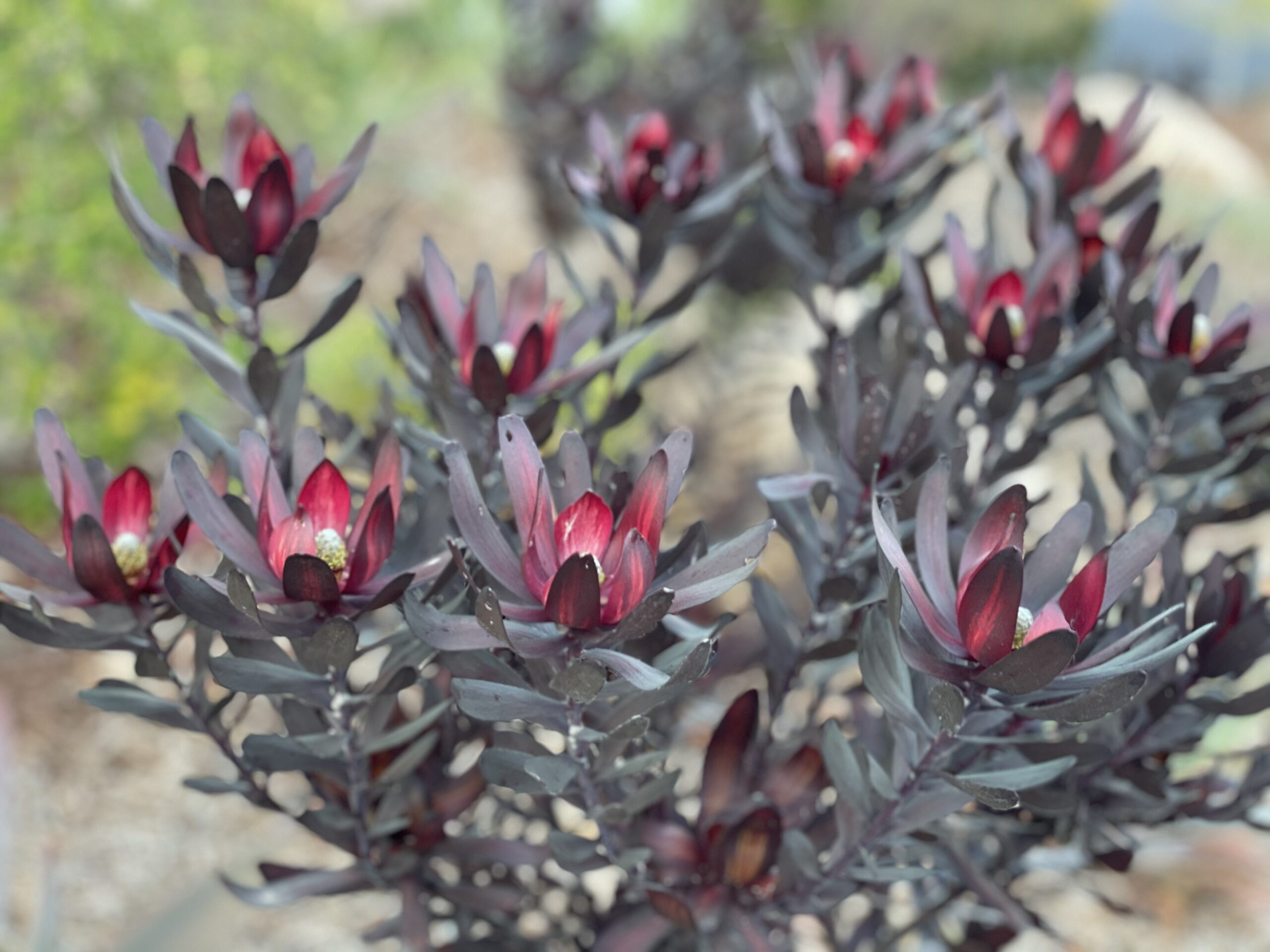
Expand Your Palette: Waterwise Plants for your Landscape
There’s nothing more thrilling to plant lovers than discovering new plants to test in the garden. Here in the southernmost corner of California, we have
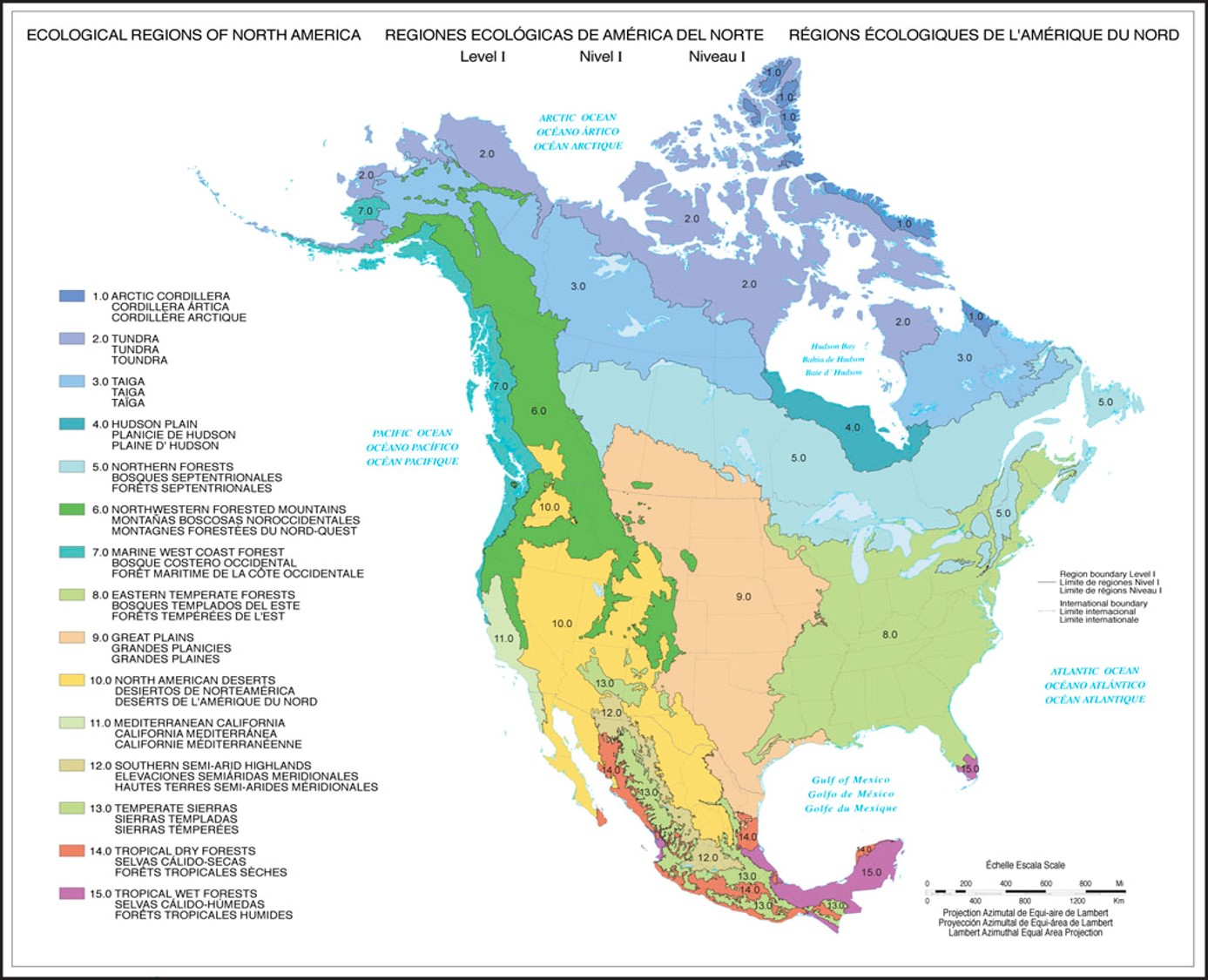
What Climate is This? Part One – A Garden Futurist Special
Winter 2022 Listen to the Podcast here. If you live in the Pacific region, you know that seasons in your garden look different from the











Responses